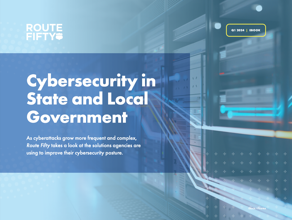Connecting state and local government leaders
State officials seek a balance between fighting crime and boosting Mexican tourism.
NOGALES, Ariz. — I was on the scene here at Arizona’s largest border crossing when federal agents won a small victory in the nation’s battle against drug trafficking.
Screening people walking across the Mexican border in early April, an officer detected something suspicious in the behavior of an American teenager. Pulled aside for secondary screening, the 16-year-old turned out to be a drug mule, carrying heroin in packages form-fitted to her body closely enough to thwart casual inspection at the busy Dennis DeConcini border crossing.
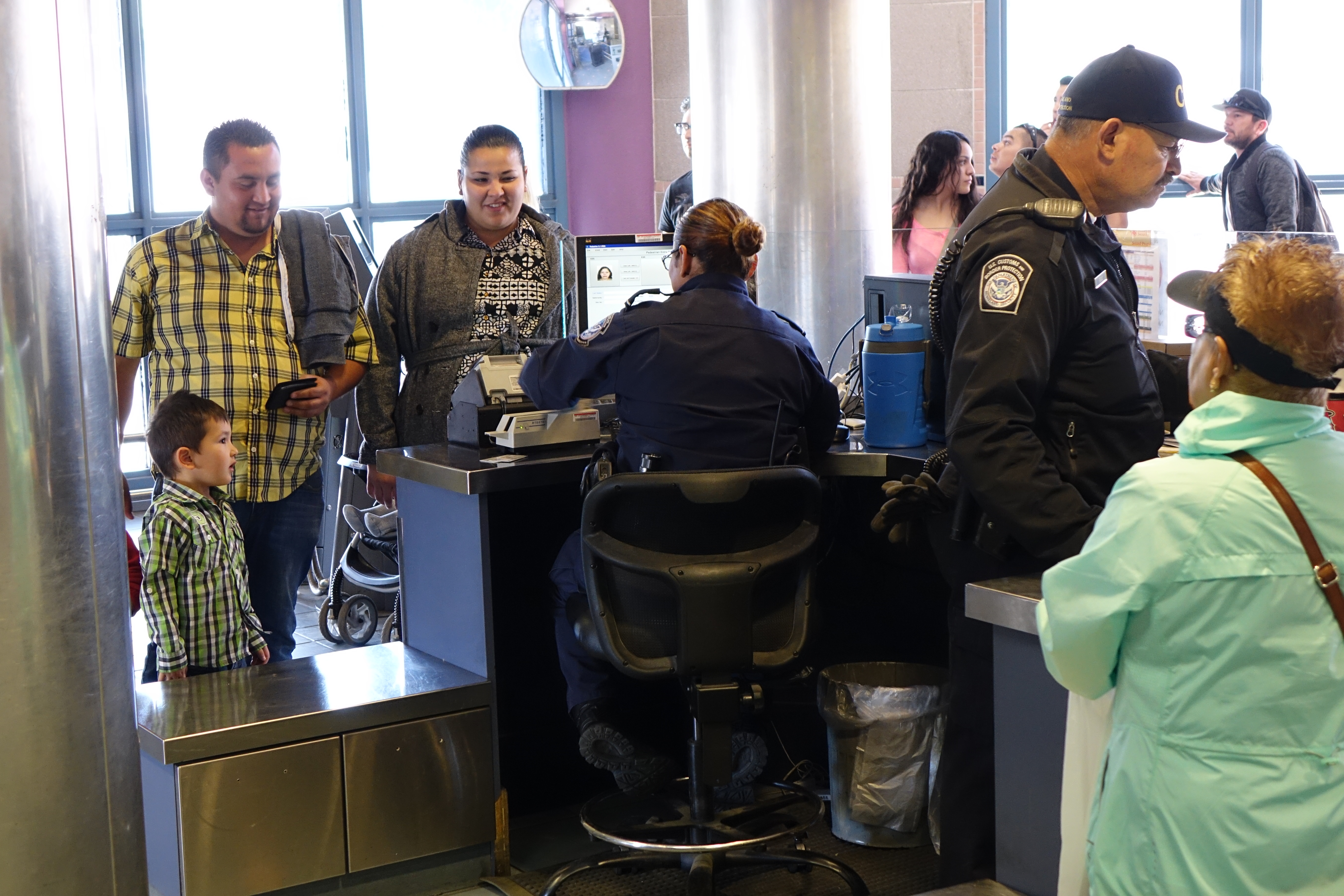
This was a small loss for the Sinaloa and other drug cartels in Mexico.
Despite the huge resources the United States government has deployed along the border to stop drug trafficking, it’s been difficult to stop along this stretch of the border, and certainly at other ports of entry between San Diego and Brownsville, Texas.
Here in downtown Nogales, one constant and dramatic presence is the high wall that separates this small American border city from its larger and immediate neighbor to the south, also called Nogales, in the Mexican state of Sonora.
Rust-colored steel rods rise as high as 24 feet above street level, climbing from street level up the hilly terrain and out into the rolling hills east and west of the city.
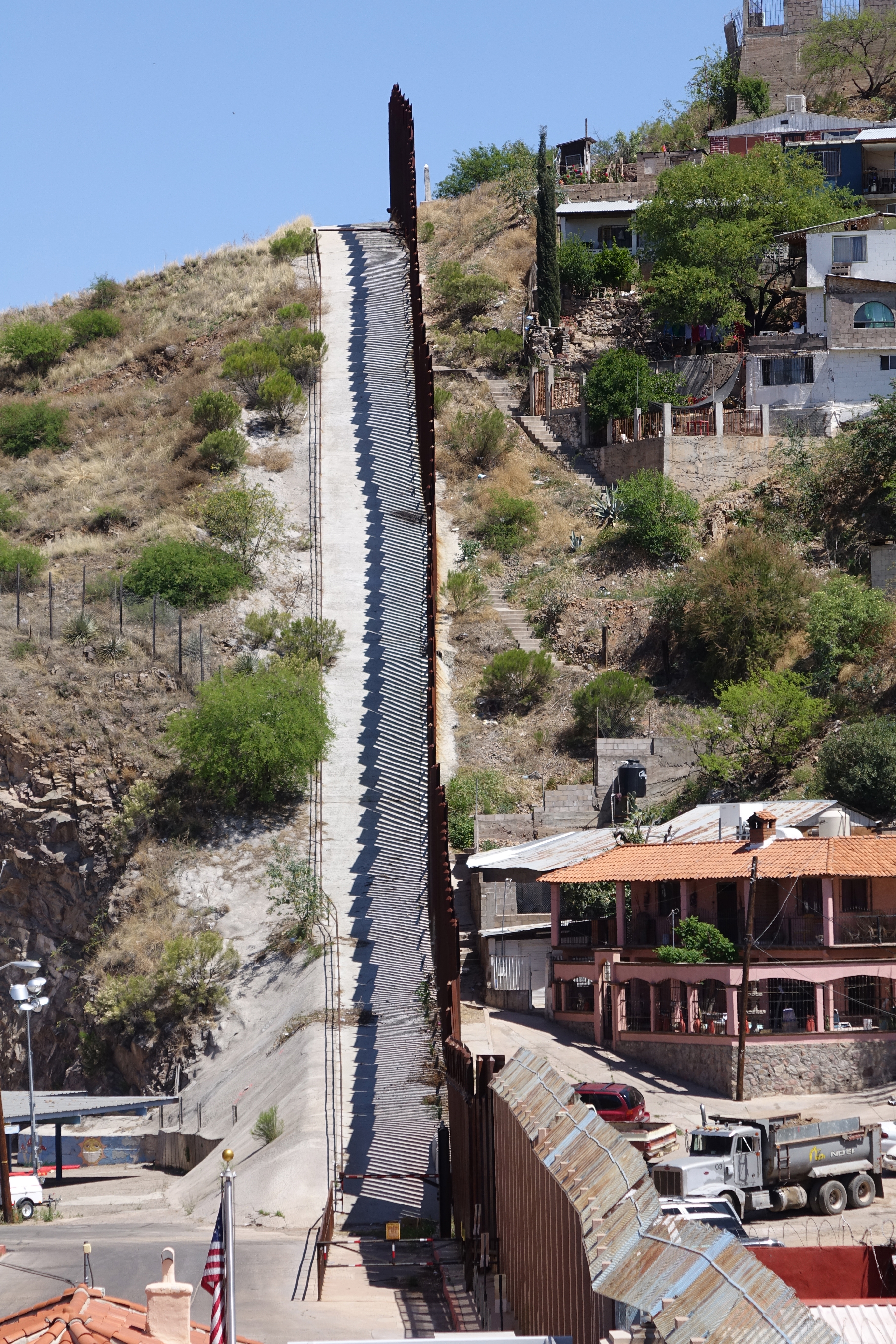
It’s not as high as the wall Republican presidential candidate Donald Trump has proposed, and, it’s clear, not high enough to discourage committed smugglers.
Riding with Border Patrol agent John Lawson along the fence, I learn that one climber has been thwarted. He may be a decoy, Lawson says, for a group of smugglers massing elsewhere along the wall. Lawson warns that we should not get too close to the wall, lest we be subjected to rock-throwing of the kind agents often experience in these parts.
Though we don’t see any climbers, the Arizona Daily Star’s front page three days later published a dramatic photograph, taken by a Mexican news crew, of two suspected drug mules carrying large backpacks rapidly climbing back over the wall to escape observation and possible apprehension on the American side.
In the Associated Press story published by the Star, Mexican journalist Carolina Rocha said that she “was struck by how quickly the men were able climb the fence.”
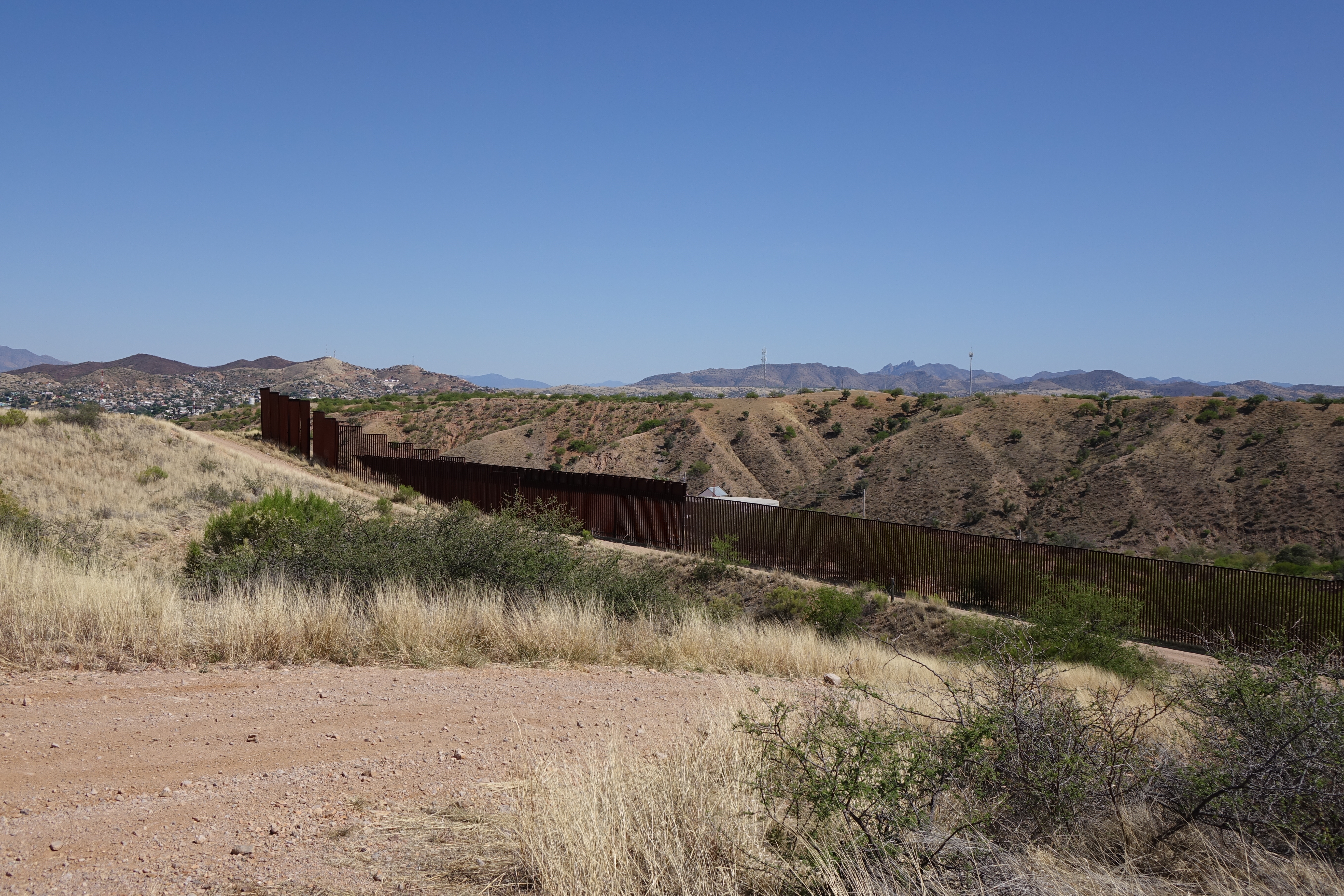
As we drive west, the fence diminishes in height until, a few miles from town, it turns into low but strong series of barriers that can stop trucks but not people.

Menace or Market?
Mexicans are seen through two very different prisms among law-enforcement and other public officials here in the Grand Canyon State.
Border Patrol agents—whose union has endorsed Donald Trump in the Republican presidential primaries—see menace in the constant probing of violent cartels that feed U.S. hunger for narcotics. That’s true of local law enforcement officials, too—men like Joe Arpaio, sheriff of Maricopa County in the Phoenix region, and Mark Dannels, sheriff of rural Cochise County hard on the border east of Nogales.
It’s also true of Arizona’s governor, Doug Ducey, a law-and-order Republican who has proposed to create a sizable new Arizona State Police “strike force” to help the feds go after criminals who cross the border. Highway patrol have been reassigned to staff the strike force, but it’s not clear that Ducey can get longer-range funding for the plan either from the Arizona legislature or the feds.
Yet as Ducey and many other Arizona officials recognize, spending by Mexicans is great for the state’s economy, and there’s a lot of potential for cross-border business deals as well. Ducey spent four days in Mexico City last June exploring the potential. In 2014, Arizona’s exports to Mexico were valued at $8.6 billion, imports from Mexico at $7.3 billion, and visitors from Mexico spent an average of $7.3 million per day in Arizona.
So at the same time that Donald Trump is seeking to build a high wall and Ducey is creating his strike force, the governor, Phoenix Mayor Greg Stanton, Tucson Mayor Jonathan Rothschild and Maricopa County Association of Governments Executive Director Dennis Smith are among officials who want to increase travel and trade.
They are excited by the idea of an “Ari-Son” megaregion extending across the Mexican border into Sonora. They envision more cross-border trade and travel by Mexicans to Phoenix and north for shopping, entertainment, skiing, visits to the Grand Canyon and more.
“The desired Mexicans are a far cry from the ‘murderers’ and ‘rapists’ of Trump’s stump speeches,” The Financial Times observed in a Dec. 17 article. “They can afford the $160 fee and offer the proof of employment and family ties back home that are required for a Border Crossing Card, which is good for 10 years and enables Mexicans to remain in the U.S. for up to 30 days at a time.”
Already in Tucson, the FT’s article reported, “[t]he city’s convention and visitor’s bureau has created television programming for Sonora and it supports charity fashion shows in the Mexican state so that well-heeled shoppers will know about the latest styles available north of the border. Tucson even engages in a form of sensitivity training to make sure its service industries are ‘Mexican ready.’”
A big new outlet mall with dozens of stores was opened late last fall, and Mexicans will be important customers. “We think this will be a hub for shopping for southern Arizona, and hopefully we’ll get some nice traffic from across the border as well,” General Manager Richard McKeown told Tucson News Now.
Mexican holders of Border Crossing Cards presently are currently allowed to travel 75 miles north of the border—to Tucson, but not to Phoenix. Ari-Son backers would dearly like to persuade the federal Homeland Security Department to make the cards good for the entire state.
Smith, a leader of the movement, said last fall that a serious campaign to persuade DHS would be mounted this spring. But in the interim, immigration has become a huge issue in the presidential primaries, and so the campaign has not yet launched. Smith’s association has retained former Arizona Republican Rep. Jim Kolbe to advise on how to proceed. A decision is expected soon.
At the Ports of Entry
In the meantime, the serious business of controlling the border is falling to officials of Customs and Border Patrol, who strive every day to balance security and commerce in Nogales.
Nogales has three ports of entry of which the oldest is the Nogales-Grand Avenue Port of Entry, now named after Arizona’s former U.S. senator, Dennis DeConcini. It was built in the early 20th century and is unique because it’s directly on the border line, not set back from it as are other U.S. port operations.
At other ports, a “pre-primary” inspection is possible by officers, some with drug-sniffing dogs, who roam through inbound lanes of traffic. But here, the “primary” inspection is the first. Drivers present identification documents to officers in the booths, who run the information against security databases and are expected to make a quick judgment as to whether the vehicle needs closer inspection. Because there’s a premium on speed—to facilitate smooth international commerce—officers hope to complete their examinations in 30 seconds. New, inexperienced officers, and problem cases, take more time—90 seconds or more.
Suspect cases are referred to secondary inspection. In other ports, such as the San Ysidro Port of Entry south of San Diego, officers often detect human trafficking, as when older cars, loaded with up to six migrants in the trunk, ride low to the road. But there’s much less human trafficking here, and the emphasis is on finding narcotics. If a driver or passenger seems unduly nervous in primary inspection, that’s one indicator and, of course, the dogs can sometimes find drugs in post-primary inspections here. In secondary, people and cars are examined with great care.

Marijuana, while still “king” among imported drugs, as Lawson observes, is not usually the focus of the drug traffickers in Nogales’ highly controlled ports of entry. Instead the traffickers look to send smaller, but much higher-value, packages of heroin, methamphetamine and cocaine, not only in cars, but also, as this morning’s apprehension shows, strapped to pedestrians who may cross through the Morley Port of Entry, the only exclusively pedestrian port of entry in the country, to visit shops and restaurants in the commercial center on the U.S. side of the border.
“So people walk over and catch a shuttle to Walmart,” says Lawson. It’s the top-producing Walmart in Arizona, he adds. “We try to get them through quickly. It affects the economy. We have to balance, legitimate trade against enforcement duties—and 96 percent of those who cross are good, law-abiding people.”
Between the DeConcini and Morley ports of entry, and the nearby border crossing for commercial traffic at Mariposa, CBP officials in the first five months of fiscal 2016 have processed a daily average of 9,500 personal vehicles, 1,040 commercial trucks and 8,400 pedestrians in Nogales.
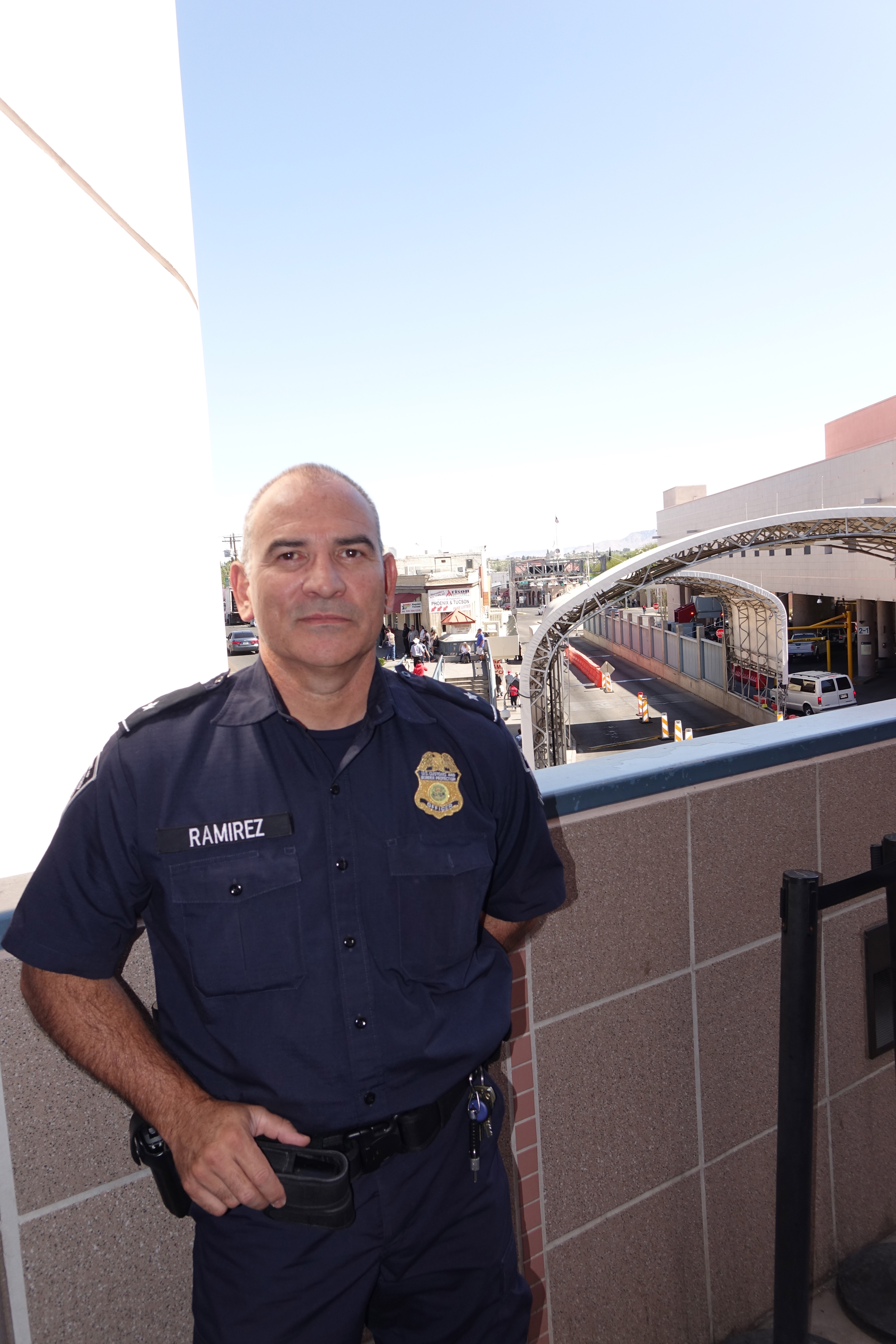
The Customs officials, with their blue uniforms, are responsible for controlling trade and catching contraband in the ports of entry, while green-clad Border Patrol agents watch areas beyond the ports of entry far into the countryside. Escorted by public affairs officer Marcia Armendariz, I’m greeted at the Customs offices on the border by Port Director Guadalupe Ramirez Jr., and several of his top lieutenants: Jesus Cruz, assistant port director for passenger operations, Cargo Chief William Badillo, Chief of Agriculture Jesus Castro.
We meet at the Nogales’ third port of entry, the state-of-the art Mariposa facility that is the entry point for the endless stream of trucks carrying goods to customers in the north, including many tons of produce—60-70 percent of all fresh vegetables consumed in the United States during the winter months. Cars and passengers also arrive here, but the focus is on trucking. Again, officials want to speed commerce, but they also examine drivers’ documentation carefully, and their behavior, and use X-ray technologies as well to look for anomalies in the loads. From a long iron catwalk above the traffic lanes, I can see two Rapiscan Eagle X-ray trucks, equipped with long U-shaped arms that pass over lines of vehicles that have been pulled aside for closer inspection. Cargoes that arise suspicion are entirely off-loaded at the facilities docks.
It’s here that Jesus Castro and his 39 agents do their work to protect American agriculture against pests in produce coming across the border not only from Mexico but also from China and elsewhere around the globe. In the produce, says Castro, “there can be slugs, snails, nematodes, and if just one of these became established in the United States, it could cost our farmers dearly.” Meticulous paperwork accompanies these shipments. It will represent, for example, that every mango imported from Mexico has been bathed in hot water to suffocate fruit flies. It will declare that citrus coming through Nogales has come from certified pest-free zones, chiefly in the Mexican state of Sonora. Avocados too must be from certain parts of Mexico certified as free of pests.
Protecting agriculture is one of three major challenges the Nogales ports confront, Ramirez says. Another is the demanding job of processing the thousands of cars and trucks that pass through each day. And the third is trying to stem the flow of drugs.
Attempts to import hard narcotics are on the increase, Ramirez says. Nearly 400 pounds of meth were discovered in one truck recently. A single ounce of meth can go for $1,200 in San Francisco. Big loads of cocaine have also been seized.
But marijuana is “still king,” Ramirez says. His agents found 17,000 pounds mixed in with airplane parts that had been assembled in one of the many maquila plants that have sprouted up in Northern Mexico in the wake of the 1994 North American Free Trade Agreement.
NAFTA confers favorable trade status to products assembled in Mexico that include parts made in the United States. And given all the controversy that still surrounds that treaty, inspectors are very careful to enforce requirements about U.S. content. “A shirt, for example,” says one of the officials. “The fabric has to be made in the U.S., and cut in the U.S., and then it can be fabricated in Mexico. But if China makes the shirt and falsifies the paperwork, our job is to catch that: show me all the data, the certification for where all of the parts of the shirt are made.”
A more significant example is found in the huge trade in automotive goods, largely shipped by rail. A single rail line runs through the DeConcini port of entry, and each day several mile-long trains with 100 cars or more pass slowly under X-ray equipment Customs has deployed. Northbound trains are also physically inspected north of town.
Automobiles and auto parts worth some $6 billion a year pass through, including Fusion Hybrid and Lincoln MKZ autos manufactured at Ford Motor Co.’s Hermosillo plant, whose $1.3 billion expansion in 2012 has the plant running at capacity with more than 3,800 workers and some 600 robots. Amid boiling controversy over NAFTA and other trade agreements and outsourcing of manufacturing plants and jobs, Ford on April 7 announced another huge investment in Mexico—$1.6 billion to produce small cars of the type now made in Michigan. Trump has denounced the move, which will confer about 2,800 jobs to Mexico by Ford’s estimate.
In the meantime, Arizona authorities have been working to alleviate a bottleneck that slows down vehicles headed north from the border. They are looking to Washington to allocate extra money to build a new interchange connecting State Road 189 with Interstate 19, the main route up to Tucson and beyond.
And while the emphasis here is on processing northbound traffic, agents are also on the lookout for southbound criminals. From time to time, they find large shipments of cash and weapons heading south to the cartels.
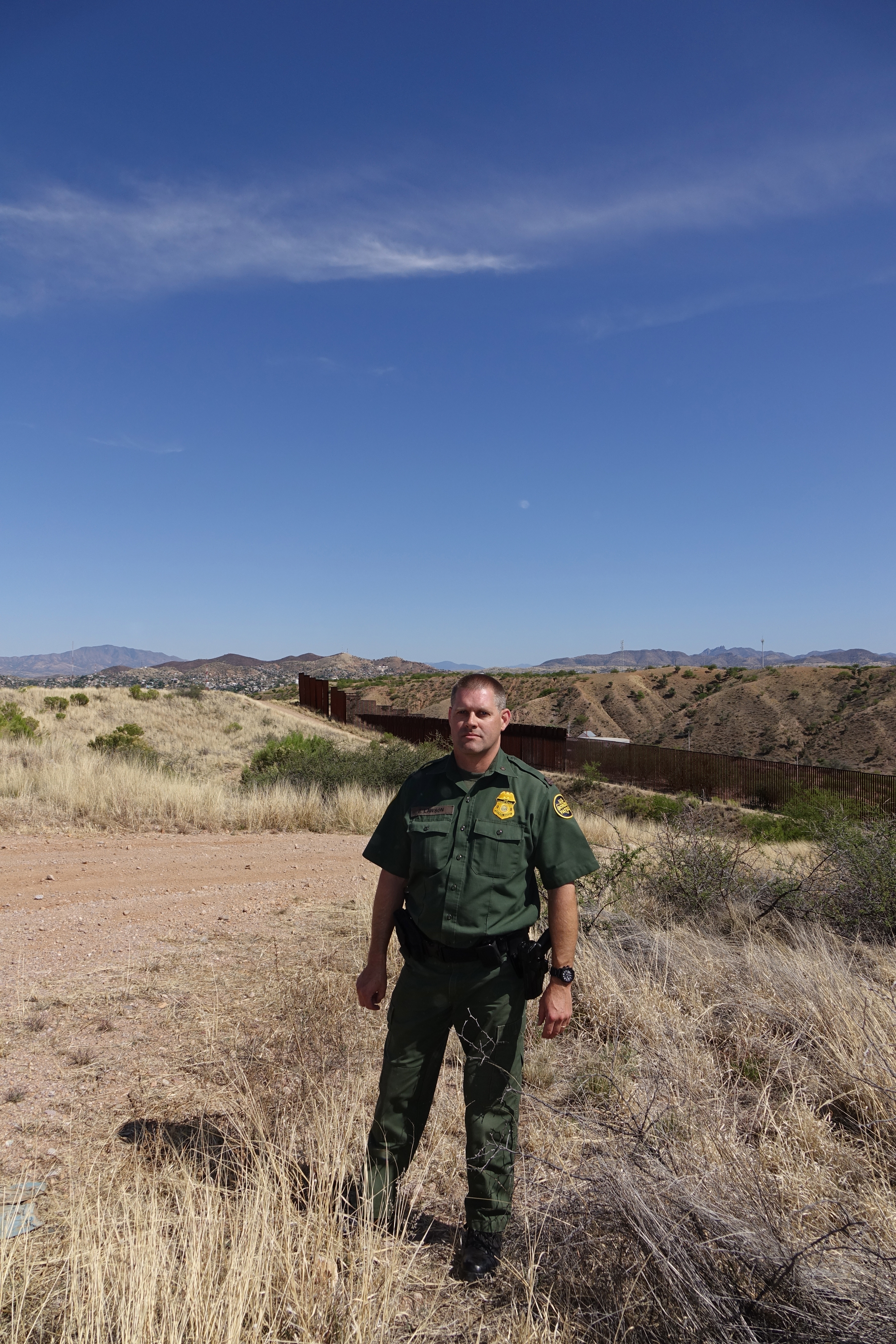
Along the Border
Outside of the ports of entry, the job of fighting illegal immigration and drug trafficking falls to the Border Patrol. John Lawson tells me that the Border Patrol has three key working objectives: information to ensure situational awareness; integration of work with that of all other federal, state and local law enforcement; and rapid response.
Just 50 yards from the border, he shows me a square meter of patched pavement that once was the end of a tunnel from the Mexican side. A box truck would park over the tunnel, he says, and contraband would be loaded through a hole in the bottom of the truck. Nearby are patches over other closed-up tunnels, a few of well over 100 discovered in the sector.
On a hill just above the center of town, we observe a high-tech tower, and a second one on a hill not more than a mile away. The towers are equipped with cameras, radars and infrared sensors. And these capabilities are complemented by ground sensors, and by Border Patrol trucks, also with radar and cameras, that station themselves on high points in the terrain.
The arrays are designed to see at night, when much of the contraband activity occurs. Data is sent to a single facility, manned 24 hours a day. Dispatchers there can call in agents in the field to catch drug mules as they seek to hide or escape to the interior. A single agent may apprehend a single mule, or even a small group, but most of the time reinforcements are dispatched.
As we drive along the wall west of town, it tapers off, rising perhaps 12 feet off the ground before ending after just a few miles. We drive down a steep hill into a wash, and beyond there, before the terrain gets too steep for vehicles, the wall consists of low railroad-steel barriers strong enough to stop trucks from passing through.
We have passed by two or three white Border Patrol vehicles patrolling the border, and as we climb out of the gulley, one of them is coming to investigate; evidently we’ve set off one of the ground or motion sensors.
Lawson says agents often have to patrol on foot in the rugged terrain, to chase down mules who have crossed the border, sometimes walking for hours and ending up miles from their vehicles. “You’ve got to be tough” to do the job, he says—an observation that also applies to the professional mules who carry heavy loads of marijuana to rendezvous points miles inland. The rigors of the job, and lack of amenities, in this out-of-the way corner of North America also mean it’s difficult to get people to sign up—and to stay.
Ramirez tells me that he is has about 150 positions open against an authorized ceiling of 400—a level of understaffing that requires “miracles” by those on duty, says Badillo. Both Customs and Border Patrol managers live with a continuing exodus of agents bound for places closer to their families or better pay or working conditions in other law enforcement agencies.
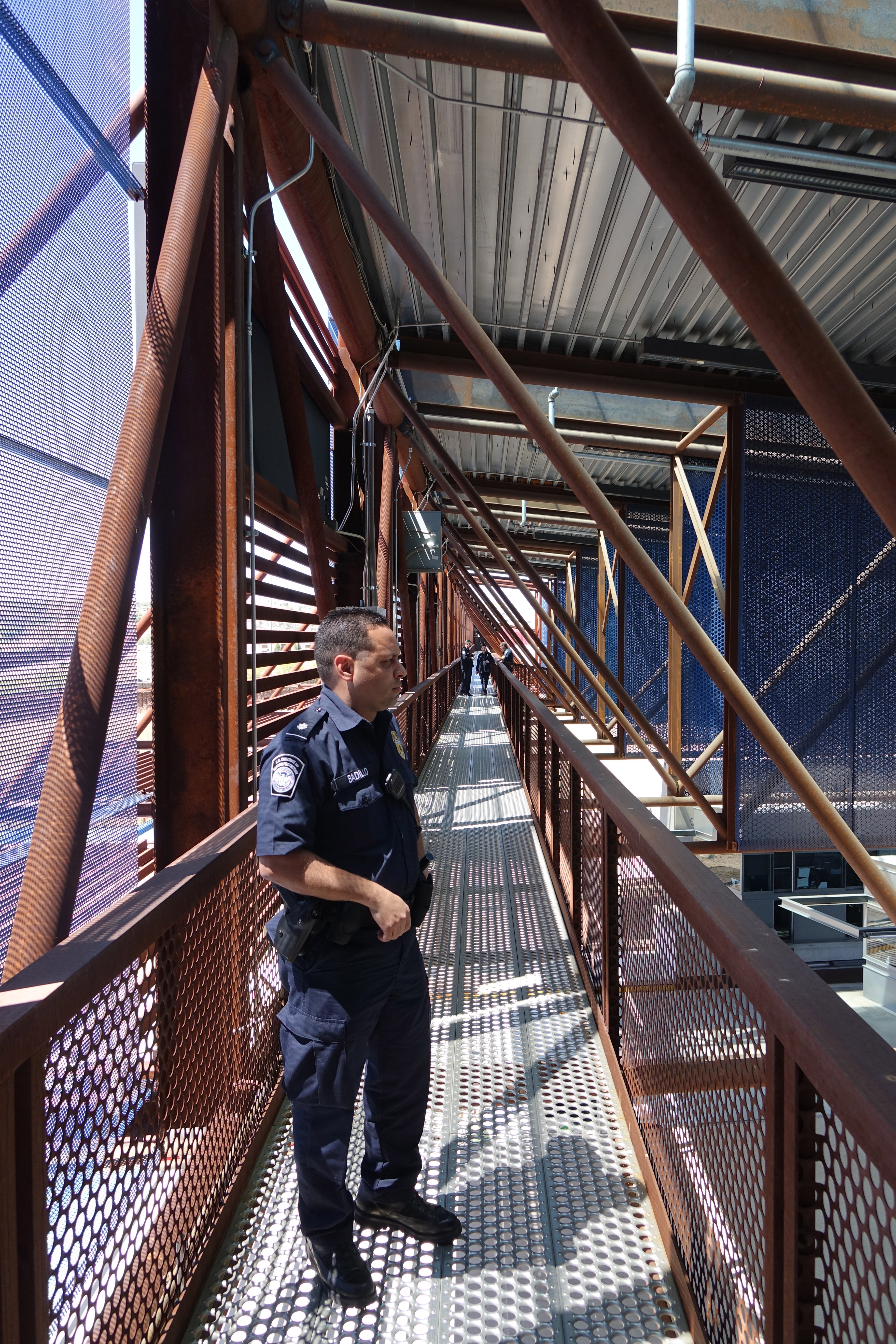
With sophisticated communications equipment and binoculars, cartel spotters stationed on the tops of high ridges tell the mules when it’s safe to move, and in which direction, bringing a military style to their criminal activities.
As it fights the battle against the cartels, the Border Patrol uses old technology—a few agents on horseback—and new: various kinds of aircraft, including unmanned drones. Davis-Monthan Air Force Base in Tucson is home to the largest component in CBP’s Air and Marine Operations division, which operates a fleet that includes UH-60L Black Hawk helicopters, Astar helicopters, as well as C-210, C-12, and long-range P-3 Orion fixed-wing aircraft. The Tucson operation also flies a couple of Predator B single-prop drones that can patrol far out in the desert and the mountains where agents are not routinely deployed. The helicopters, say Lawson, help agents giving chase on foot, by spotting the drug mules and relaying their coordinates.
Worth the Investment?
It’s fair to question whether the nation’s huge investment in border security is paying off. Ports of entry, with access to sophisticated databases, may catch terrorism suspects who turn up on watch lists, although the authorities won’t cite any examples. Apprehensions of both illegal crossers and drug quantities are down from last year and the year before. Federal authorities say that the number of Mexicans returning to their country to live exceed the numbers immigrating to the United States.
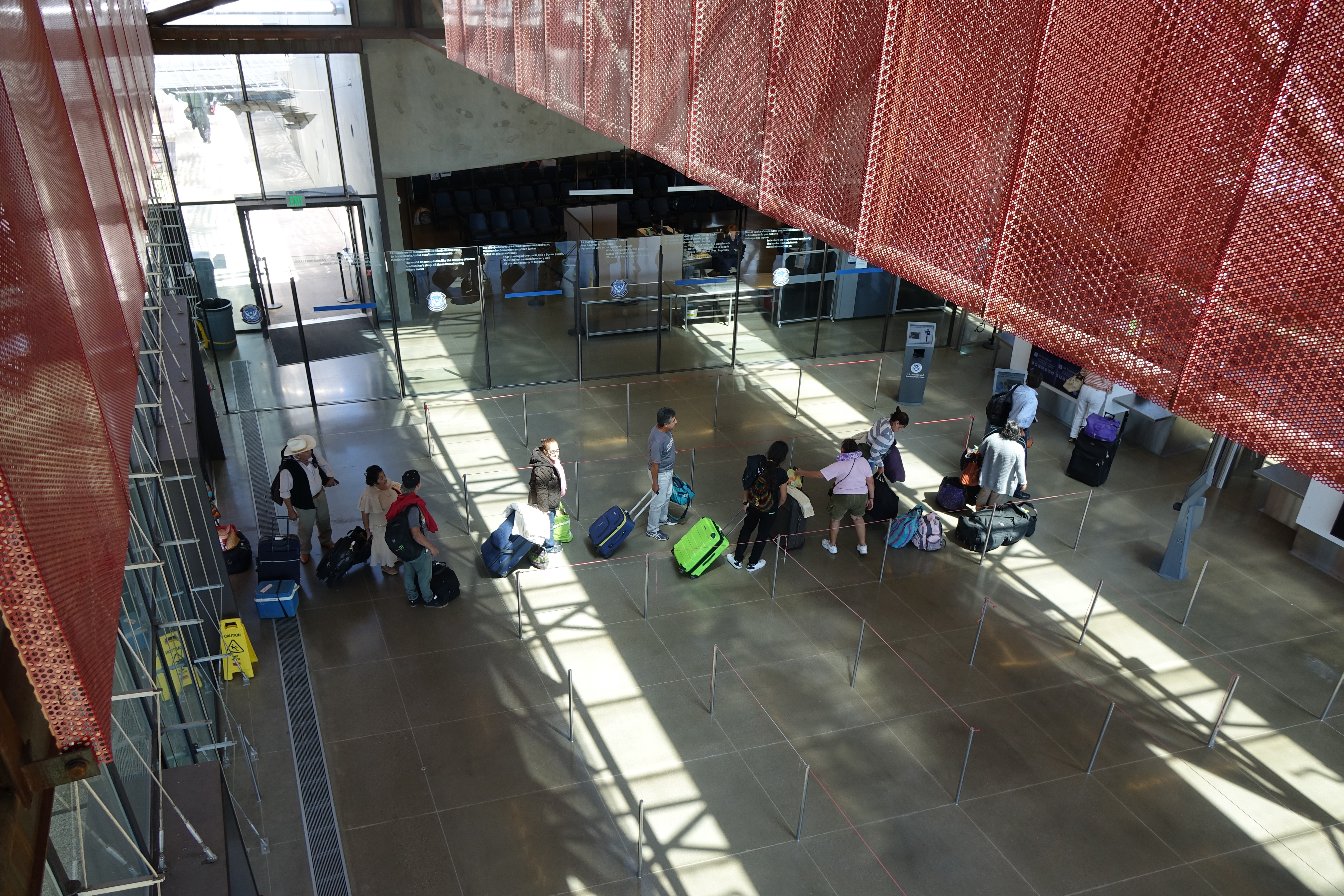
But it is clear that huge quantities of drugs are still crossing the border, feeding Americans’ hunger for marijuana and, of course, the fast-growing epidemic of heroin usage in both rural and urban America.
Howard G. Buffett, son of the famous investor Warren Buffett, is a skeptic about government claims of success. His private charitable foundation operates a sizable research farm in Cochise County, located along the Arizona border, where migrants pass through. He has contributed some $300 million on both sides of the border in an effort to stem the flow of migrants and drugs.
In an interview with former CBS News correspondent Sharyl Attkisson on her “Full Measure” public affairs program, Buffett says: “You know, if I was a shareholder of a company and I had my CEO show up and tell me year after year, ‘well, we did better this year, we just lost less money,’ and that’s the kind of metrics Border Patrol uses.”
He goes on to say that “part of the answer is our government admitting that we’re failing at this. We’re not doing the job we need to do.” During the same March 6 broadcast, Cochise County Sheriff Dannels tells Attkisson: “After over three decades of working this border, I can tell you this much: the will to secure this border is not there.”
A similarly dour assessment of conditions on the border came from the National Border Patrol Council, the union representing 16,500 line agents, in its unprecedented March 30 endorsement of Trump’s bid for the Republican nomination. “America has already tried a young, articulate freshman senator who never created a job as an attorney and under whose watch criminal cartels have been given the freest border reign ever known,” said the statement signed by the union’s president, Brandon Judd.
U.S. Sen. John McCain is prominent among Arizona officials who are toeing a fine line, at once promoting trade and eying greater access to the state for many thousands of Mexicans while also advocating tougher enforcement to stop illegal activity.
Just this month, the senator asked Homeland Security Secretary Jeh Johnson to seek border surveillance assistance from the Army, which flies drone aircraft out of its Fort Huachaca base in Sierra Vista, about 60 miles to the northeast of Nogales.
At the moment, there is no such coordination, McCain complained in his April 12 letter, adding that “Arizona remains a major crossing point for heroin and other narcotics trafficking from Mexico.”
Timothy B. Clark is Editor-at-Large at Government Executive’s Route Fifty.

NEXT STORY: New apps help taxpayers report waste, fraud and abuse


